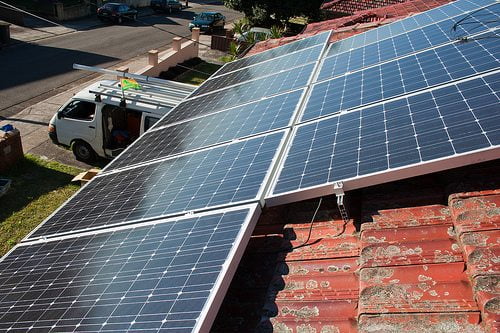

Economy
The rise of affordable eco homes in the UK
High prices and few homes are traits most people would associate with the British housing market. Yet within this gloomy landscape for buyers, there are hopeful signs from a branch of housing that is often considered to be far less cost-effective than it actually is: eco-friendly homes.
With fuel bills rising and concerns about the effect of greenhouse gases on climate change intensifying, attitudes towards eco-friendly homes have performed a U-turn in recent decades. Back in 2005, 80% of homebuyers said they wouldn’t consider energy saving as a factor when searching for a house. Fast-forward seven years, and 82% of people are now actively seeking it as a positive. The trend has only grown since, with just over half of buyers even saying they are willing to pay an extra few thousand pounds for eco-friendly, green features.
Of all the factors driving this newfound popularity, the growth in companies specialising in environmentally-friendly developments has had a significant effect. These include pioneers such as Beddington Zero Energy Development’s zero carbon emissions project in Hackbridge, London, as well as not-for-profit co-operatives like the Hockerton Housing Project, where residents even grow their own food and harvest water.
Yet ultimately, it is people realising the financial and environmental benefits of such homes that has driven their boom the most. It’s now recognised that eco-friendly homes are generally better maintained than older, more rundown properties, from the efficiency of lighting and air conditioning to more durable wall and window insulation. This enables homeowners to keep the heating off for longer, saving on bills while requiring less fossil fuel to be burnt to create the energy.
In many ways, the same could also be said for methods of resource-collection, such as solar panels and rain storage tanks, with the former actively bringing in money through its feed-in tariff income. Other features, such as only using certified wood from classified sustainable forests, have wider environmental benefits which, if attitudes continue to become more climate conscious over time, could arguably add to the house’s value in years to come.
You’ll find there are often perks to having eco-friendly features that most people don’t know about. Blown-in cellulose wall insulation, for example, is far better at covering every gap and crack than ordinary insulation sheets, and the cellulose material more than doubles the building’s ability to resist the spread of fire. On top of that, the scale of these benefits increases every year as technology advances and systems are improved. Modern-day solar panels, for instance, can meet at least 70% of a home’s hot water requirements. On top of that,
As the prices of these products continue to drop while their efficiency only improves, their value as an investment increases and the prospect of securing a homeowner loan to take advantage of this becomes more appealing. Often referred to as personal loans, such arrangements usually provide between £1,000 and £25,000 which is repaid over the next one to 10 years. This means that most homeowners are in a position to make their home more eco-friendly, cover most or possibly all of the loan repayment costs through the results and, once the loan is paid off, reap the financial benefits from thereon afterwards. The planet will also be a lot healthier for it.


 Environment10 months ago
Environment10 months agoAre Polymer Banknotes: an Eco-Friendly Trend or a Groundswell?

 Environment12 months ago
Environment12 months agoEco-Friendly Home Improvements: Top 7 Upgrades for 2025

 Features9 months ago
Features9 months agoEco-Friendly Cryptocurrencies: Sustainable Investment Choices

 Features11 months ago
Features11 months agoEco-Friendly Crypto Traders Must Find the Right Exchange























